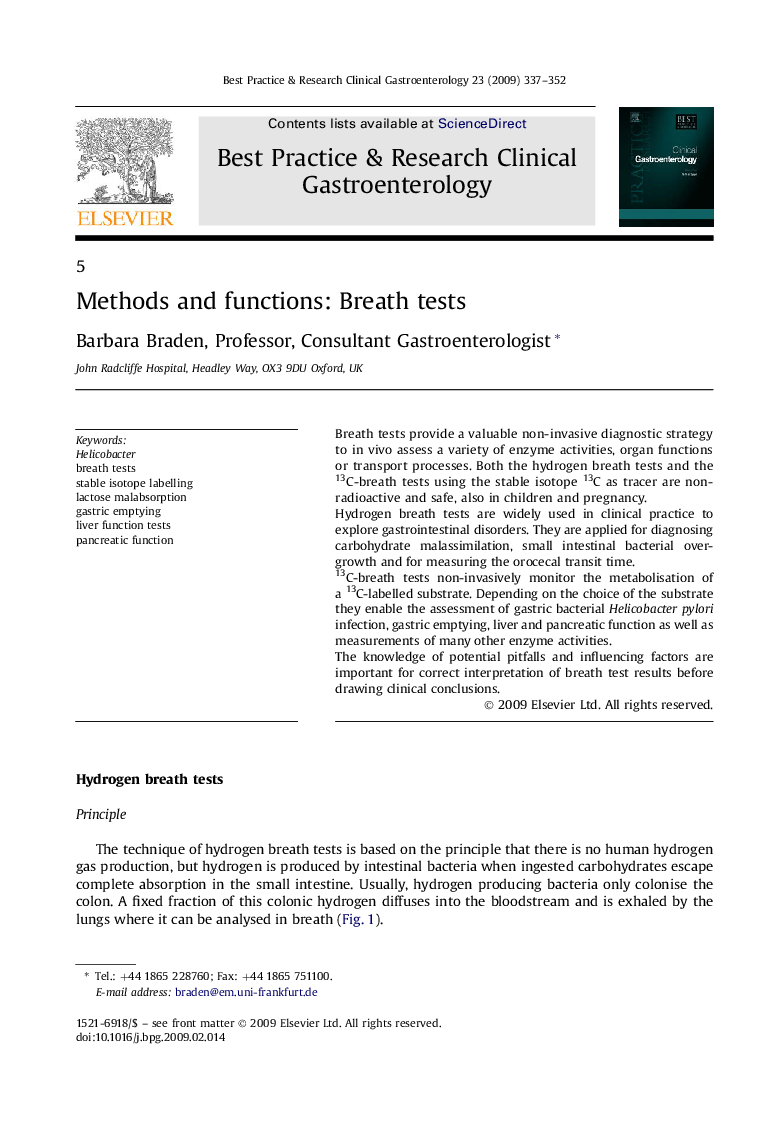| Article ID | Journal | Published Year | Pages | File Type |
|---|---|---|---|---|
| 3254761 | Best Practice & Research Clinical Gastroenterology | 2009 | 16 Pages |
Breath tests provide a valuable non-invasive diagnostic strategy to in vivo assess a variety of enzyme activities, organ functions or transport processes. Both the hydrogen breath tests and the 13C-breath tests using the stable isotope 13C as tracer are non-radioactive and safe, also in children and pregnancy.Hydrogen breath tests are widely used in clinical practice to explore gastrointestinal disorders. They are applied for diagnosing carbohydrate malassimilation, small intestinal bacterial overgrowth and for measuring the orocecal transit time.13C-breath tests non-invasively monitor the metabolisation of a 13C-labelled substrate. Depending on the choice of the substrate they enable the assessment of gastric bacterial Helicobacter pylori infection, gastric emptying, liver and pancreatic function as well as measurements of many other enzyme activities.The knowledge of potential pitfalls and influencing factors are important for correct interpretation of breath test results before drawing clinical conclusions.
